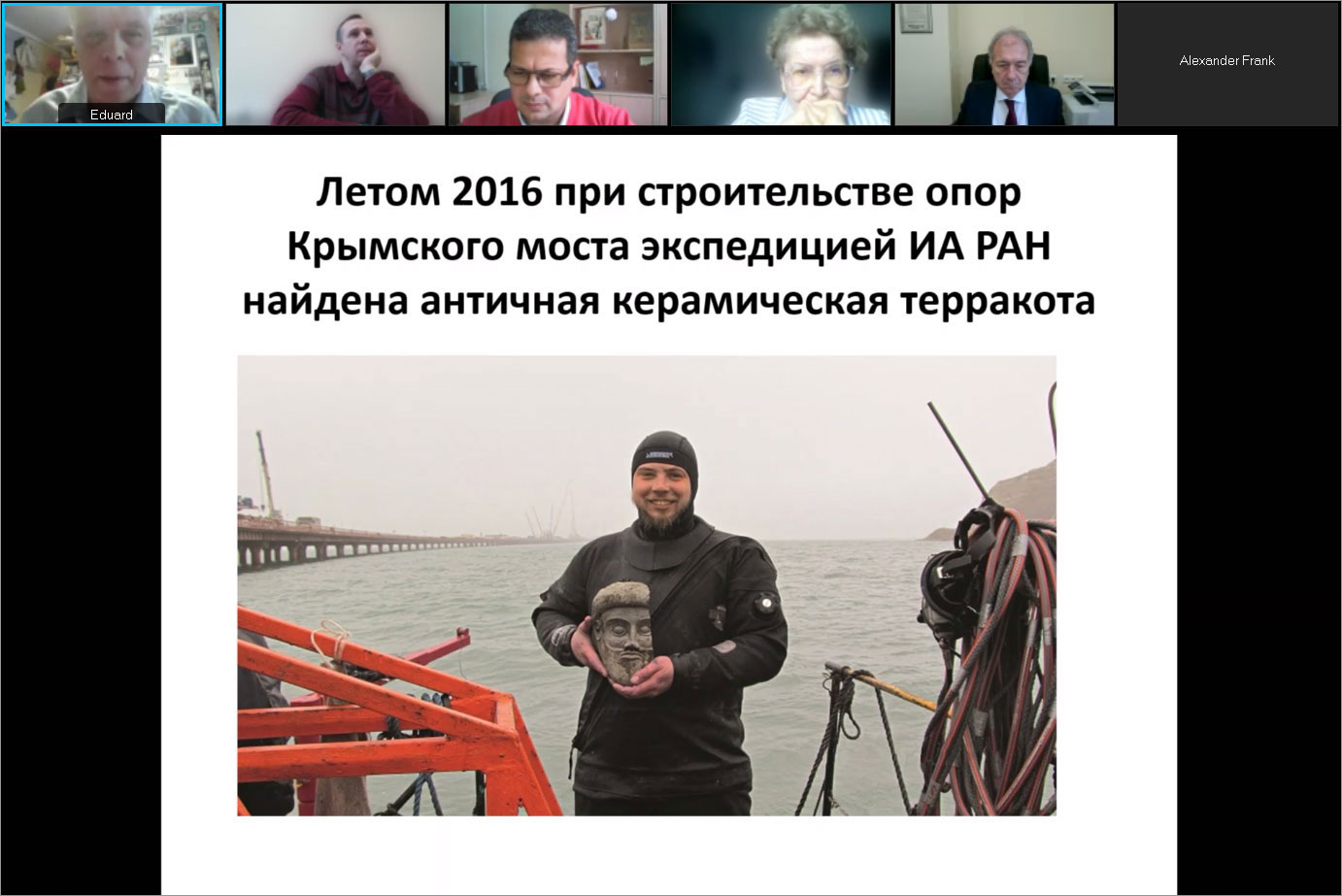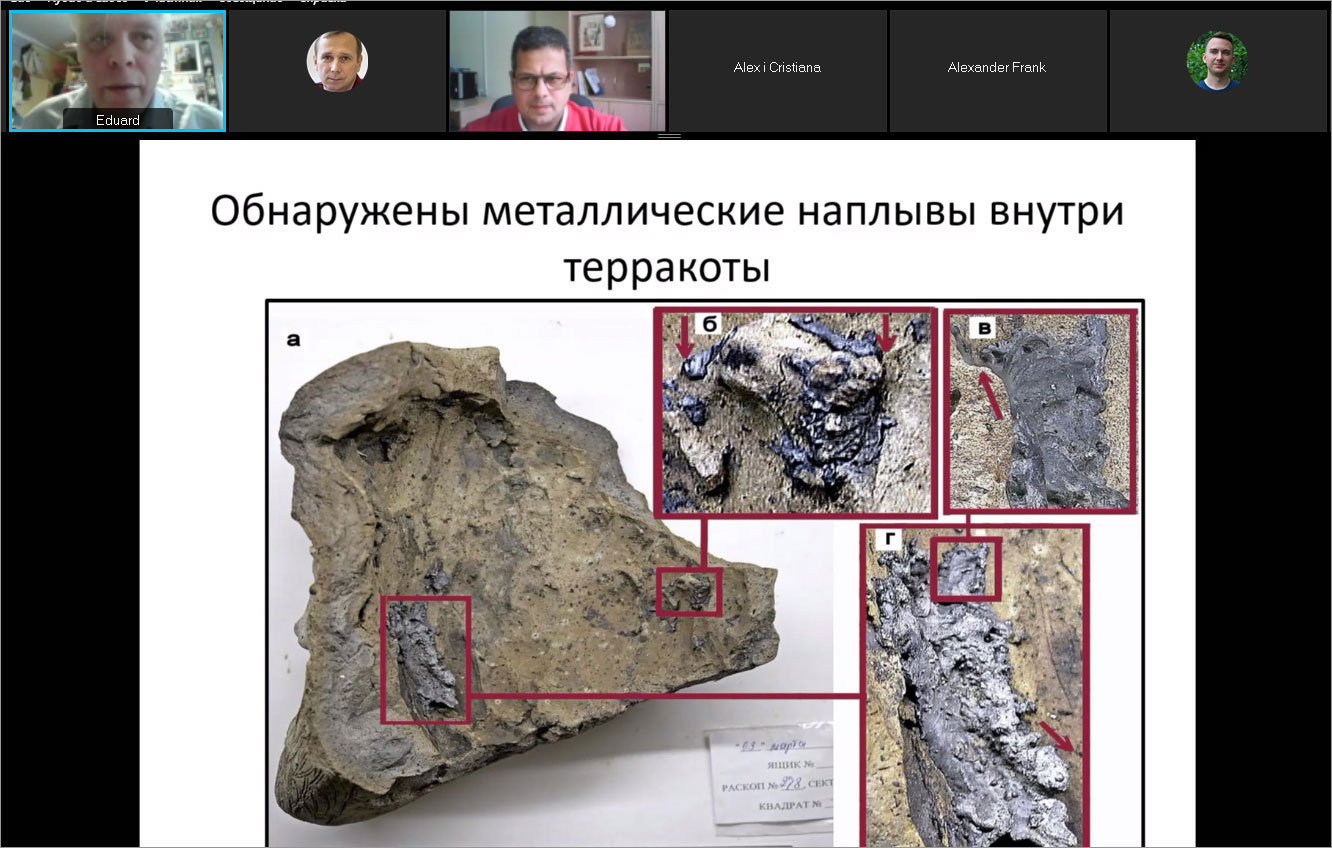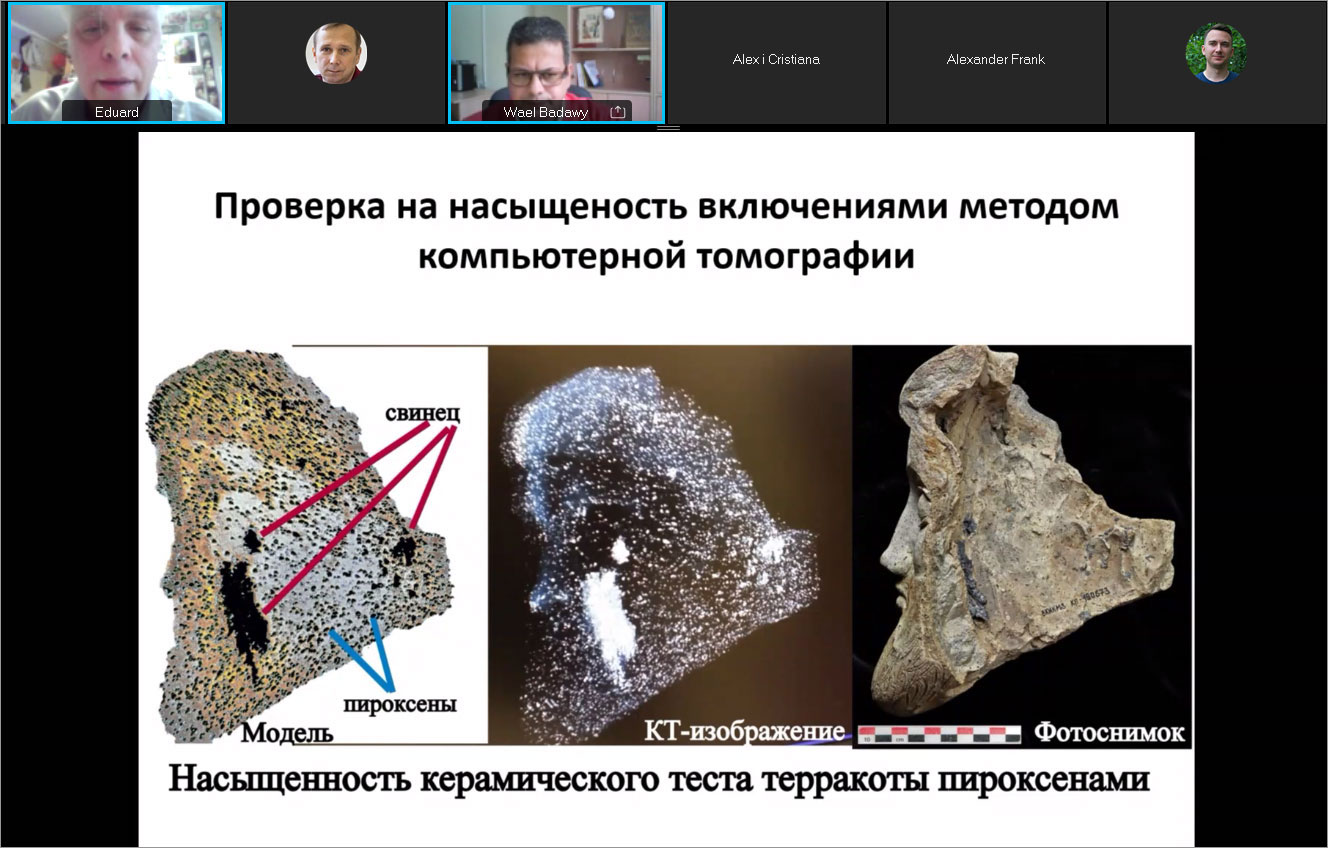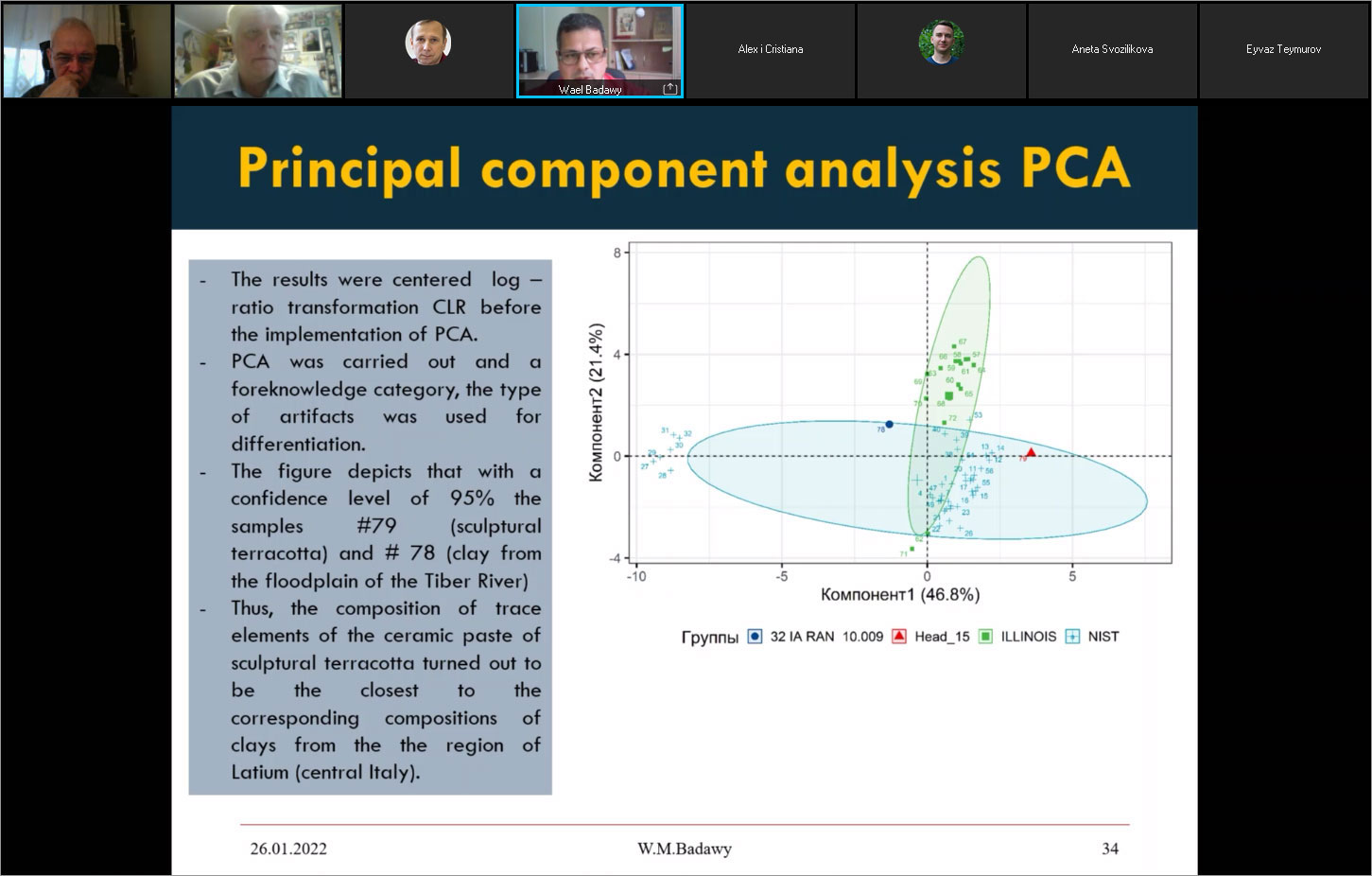JINR studies unique artifact found in Kerch Strait
Media, 01 February 2022
Researchers from the Group of Neutron Activation Analysis at the Frank Laboratory of Neutron Physics JINR, along with colleagues from the National Research Centre “Kurchatov Institute” and archaeologists from the Institute of Archaeology of the Russian Academy of Sciences, are studying the head of an antique sculpture, the work of authorship. The head was found in underwater sediments during the construction of the Crimean bridge. Scientists have grounds to believe that the clay comes from the region of modern Italy.
The unique terracotta was found in 2017 near Cape Ak-Burun in the Kerch Strait during the construction of bridge pillars. A large fragment of ancient terracotta was found during soil sampling among other artifacts – mainly ancient Greek ceramics, fragments of amphoras. The terracotta is a life-size male head made of baked clay. It is extremely rare because antique terracotta does not usually exceed 40 cm in height. Presumably, this is an ancient god or hero. Now a large team of archaeologists, chemists, and physicists, including researchers of the Joint Institute, is studying the object.
On 26 January, JINR and the National Research Centre “Kurchatov Institute” held a joint scientific seminar. A leading specialist of Kurchatov Institute Eduard Greshnikov and an FLNP JINR senior researcher Wael Badawy presented the results of research into the origin of the artifact’s raw materials.
Thus, as part of the research, scientists were supposed to recreate the original appearance of the terracotta, determine the technology of its manufacture, clarify the age of the object, determine production centres (because visually the terracotta did not look as made from local clay), and trace trade relations. The study was challenging also because scientists had to determine the source of the clay of the ready-made ceramic product. Before the finished ceramic product is fired, a number of impurities, such as leaners, are added to its clay base during the manufacture of ceramic dough. Thus, it becomes very difficult to determine the geographical origin of the material.
The choice of research methods was also limited. “The artifact is a work of art. This sculptural object, probably a detail of the architectural design of a temple building, is a one-of-a-kind copy, the work of authorship (as established by the tomographic method). This terracotta is worthy not only of the Kerch Museum where it is now exhibited. It is worthy even of the Louvre or the Hermitage, where Roman copies from Greek originals that have not survived are often exhibited. Because the Crimean terracotta is an undoubted original,” Eduard Greshnikov said. In this regard, it was unacceptable to use many of the usual research methods but only those that allow minimising the impact on the test sample. Kurchatov Institute and the Frank Laboratory of Neutron Physics JINR employ such methods. Thus, a unique artifact was provided for study to them.
The set of research methods included neutron activation analysis, synchrotron diffraction, infrared spectroscopy, scanning electron and optical spectroscopy, and energy-dispersive X-ray microanalysis. So, when studying a sculptural object, the resin was found on the area imitating hair, moustache, and beard. The samples were sent for radiocarbon dating to the University of Georgia (USA). It was found out that the artifact was covered with resin in the 5th century BC. Experts were also able to determine the type of resin: the craftsman used sandarac, i.e. a resin secreted by the trees of the Western Mediterranean.
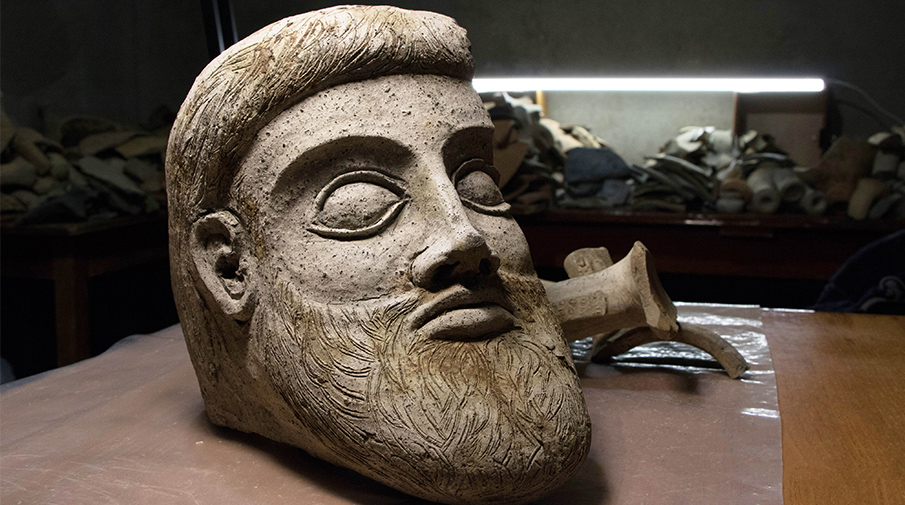 Photo: Infocentre “Crimean bridge”
Photo: Infocentre “Crimean bridge”
In addition, lead inclusions were found inside the hollow terracotta, which was studied for stable isotope ratios using mass spectrometry. It was established that the Lavrion mines near Athens (Greece) were the place of origin of the lead on the terracotta. Athenian lead was exported to ancient Greek colonies throughout the Mediterranean. “Perhaps the potter used lead to balance or hold the terracotta slab. This practice was widely used in the ancient world,” the speakers noted.
The study of dye pigments in pores of ceramics showed that the area imitating hair was covered with dyes. The dyes were made on the basis of iron-manganese compounds, which gave a black-brown colour to a part of the product. Red ochre was used on the lips. Part of the object was plastered, which was done as an undercoat.
The method of computed tomography showed that the terracotta’s ceramic paste is rich in inclusions of pyroxenes of volcanic origin. After that, using powder X-ray diffraction, their types were determined by comparing the mineral composition of the terracotta with the compositions of reference samples provided by the Institute of Archeology of the Russian Academy of Sciences, a long-standing partner of JINR. Jacobsite, one more iron-manganese compound, which is formed during the firing of clays containing manganese and iron oxides, turned out to be unique in the composition of the ceramic sculpture paste. Outcrops of such clays were located in zones with high manganese content. One of the samples of the analysed clays, which was the closest in terms of geochemical characteristics to the ceramic paste of the terracotta, was taken near the Italian manganese deposit Mazzano Romano.
However, in addition to it, inclusions of one of the varieties of clinopyroxene were found in the ceramic paste, which are typical of samples from the city of Sinope, the Puglia region, and some regions of Central Italy. Thus, the conducted research made it possible to significantly narrow the geography of the search for the origins of the materials used in the manufacture of ceramic mass.
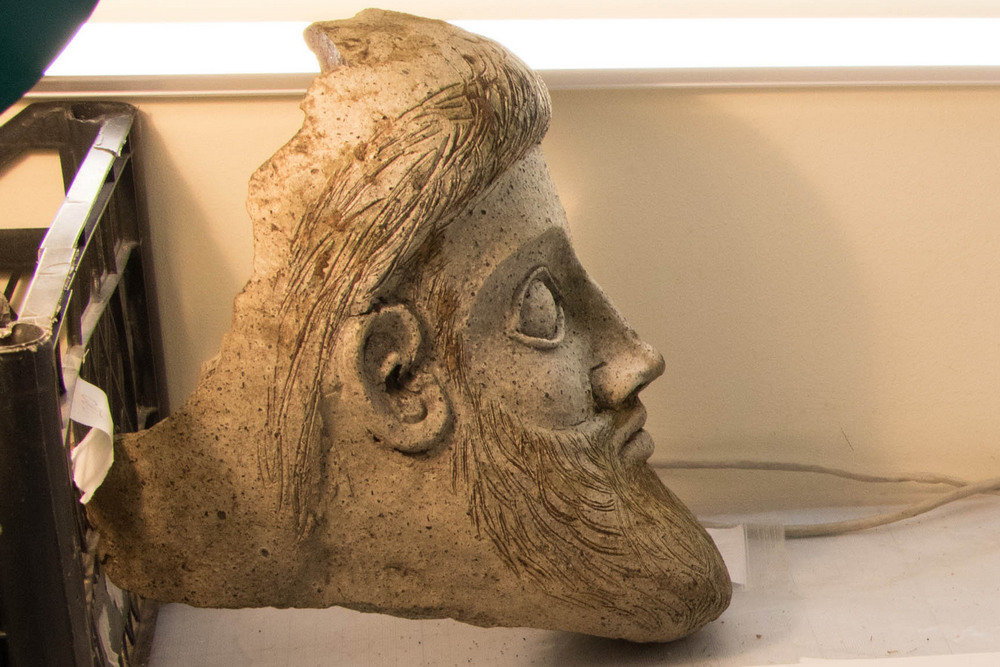 Photo: Infocentre “Crimean bridge”
Photo: Infocentre “Crimean bridge”
The next stage in the study of the terracotta took place at FLNP JINR. The elemental composition analysis, namely the neutron activation analysis method, was used at the IBR-2 reactor. To compare the obtained results, a reference group of samples with known elemental compositions was necessary. So, the Italian database was used, which was also compiled using the neutron activation analysis method. Furthermore, FLNP scientists used not only the neutron activation analysis method but the X-ray fluorescence (XRF) as an additional method for detecting macroelements. For this purpose, the Institute of Archeology provided 14 ceramic reference samples for a comparative analysis of elemental compositions. “41 chemical elements were detected using X-ray fluorescence and neutron activation analysis methods. It turned out that the elemental composition of the terracotta had similarities with the compositions of other samples, mainly originating from central Italy”, said Wael Badawy, a JINR speaker.
Researchers then applied various statistical analytical methods to test this conclusion. In accordance with the measurements and their subsequent statistical processing, samples from the Latium region, central Italy, turned out to be the closest in terms of the geochemical characteristics of the terracotta clay. This conclusion is supported by the results of optical studies and the data of phase analysis of the ceramic paste of the sculpture, as well as the analysis of the elemental composition of its inclusions, i.e. clinopyroxenes.
It should be noted that the presented studies are pioneering in Russia. This work is being carried out by a team of bright scientists consisting of: M.V. Kovalchuk, E.B. Yatsishina, E.A. Greshnikov, P.V. Dorovatovsky, N.N. Presnyakova, R.D. Svetogorov, I.N. Trunkin, Kashkarov P.K. (National Research Centre “Kurchatov Institute”); N.A. Makarov, V.S. Olkhovsky (Institute of Archaeology of the Russian Academy of Sciences); W.M. Badawy, A. Yu. Dmitriev, V. V. Lobachev, N. N. Chepurchenko (Frank Laboratory of Neutron Physics, Joint Institute for Nuclear Research).
